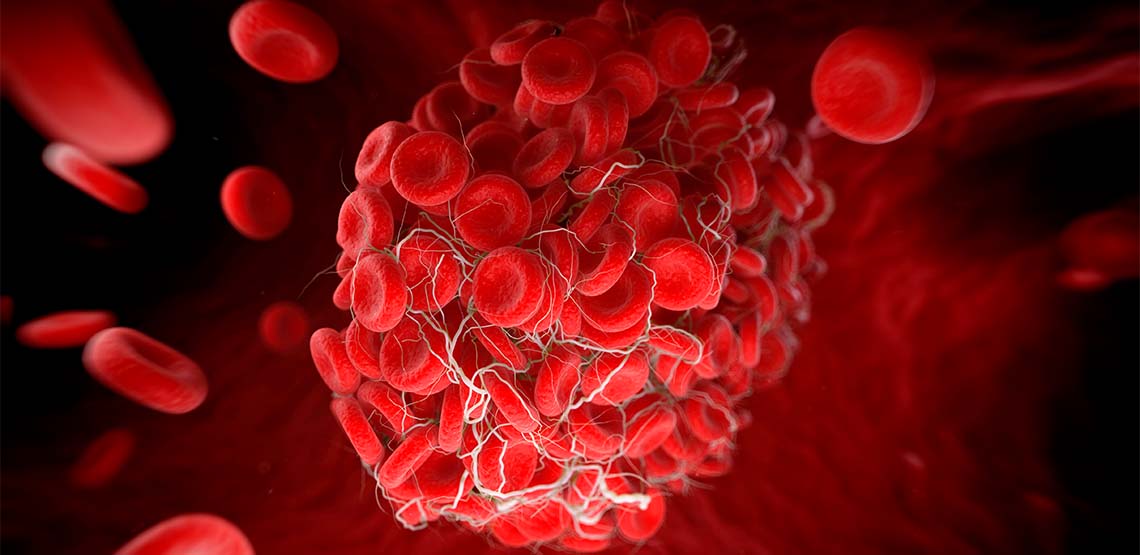Deep Vein Thrombosis Treatment Options
Deep vein thrombosis (DVT) is a clump of blood that forms into a clot. The clot develops in a vein somewhere in the body. Although clots can develop in the upper body, they are more common in the lower legs and pelvis. Deep vein thrombosis often goes undiagnosed and can lead to serious complications. This is why it is vital to understand your options of deep vein thrombosis treatment, so you can protect your health.
DVT Complications
When the thrombosis forms, it blocks proper blood flow. It can lead to post-thrombotic syndrome (PTS), which causes damage to the valves in the veins. Symptoms of PTS can include pain, swelling and ulcers in the affected area. According to the Centers for Disease Control and Prevention, up to one-half of people with deep vein thrombosis develop long-term complications.
The most serious complication occurs when the blood clot travels from the original location to the lungs. When this occurs, it is called a pulmonary embolism, and it is a life-threatening condition.
Fortunately, with a proper diagnosis, deep vein thrombosis treatment is possible, which can prevent serious complications.
What Causes DVT?
Anyone can develop deep vein thrombosis, but certain factors can increase your risk:
- Surgery. Surgery can lead to damage to a blood vessel and possibly to a clot.
- Inactivity. Sitting for long periods or bed rest can cause blood to collect in the legs and increase the risk of a clot forming.
- Some medications. Some types of drugs may increase clotting. In addition, birth control pills and hormone therapy may also increase the risk.
Other risk factors:
- Smoking
- Being overweight
- Pregnancy
- Past history of deep vein thrombosis
Signs and Symptoms
According to the American Academy of Orthopaedic Surgeons, many people have no symptoms of a deep vein thrombosis. When symptoms do occur, individuals may experience:
- Pain
- Swelling
- Reddening of the skin
- Tenderness
People who develop the above symptoms should seek medical help immediately to prevent complications from developing.
How Is DVT Diagnosed?
Deep vein thrombosis is diagnosed through a medical exam and certain testing. Different diagnostic tests can detect the clot:
- CT scan
- Ultrasound
- D-dimer test
Deep Vein Thrombosis Treatment Options
Deep vein thrombosis is treatable. Usually, the sooner the clot is treated, the better the outcome. The goals of treatment are to prevent the clot from getting larger and to stop it from breaking off and moving to the lungs.
The type of treatment given may depend on the size of the blood clot and any other underlying conditions a person has.
Observation and Monitoring
If a blood clot is small and isolated, your doctor may take a wait-and-see approach. This may depend on your risk factors and individual situation. But you may have regular ultrasound scans to monitor the size of the clot before determining if medication is needed.
Related Search Topics (Ads)
Medications
Usually, nonsurgical treatment is the preferred option for dissolving the clot and preventing it from getting larger. The classification of medication used is anticoagulants.
Different anticoagulants are available with some of the most common, including warfarin and heparin. They work to dissolve the clot. The medication protocol may vary. But often, the medications are administered through an injection under the skin at first. After a few days, oral medication may be prescribed.
Anticoagulants can have side effects. The main side effect to watch for is bleeding. Depending on the dosage and condition of the patient, they may be monitored in the hospital to make sure excess bleeding does not occur.
Even if someone is not monitored in the hospital, they will likely have frequent blood tests ordered to make sure the level of medication is high enough to prevent the clots from getting larger, but not so high that the drugs lead to excess bleeding. Additional tests may be performed to see if the clot has dissolved.
There is also a newer class of anticoagulants called Xa inhibitors. This medication is taken by mouth and is an effective option for some people. It requires less frequent monitoring, so it is being prescribed more often, but it may not be appropriate for everyone.
In addition to excess bleeding, anticoagulants may have other side effects. According to the Mayo Clinic, there are several possible complications:
- Headaches
- Dizziness
- Joint pain
- Vision changes
- Blood in the stool or urine
Anyone who has the above symptoms should seek immediate medical attention.
Surgery
If medication does not work and the blood clot continues to increase in size, or if someone cannot take anticoagulants due to a medical condition, surgery may be recommended.
The procedure involves inserting a vena cava filter in the primary vein leading to the heart. The filter acts as a net and catches a clot moving through the bloodstream before it travels to the lungs. Although the procedure may prevent a deadly pulmonary embolism, it does not prevent new clots from developing.
DVT Prevention
As with many types of medical conditions, the prevention of a deep vein thrombosis is your best bet:
- Wearing compression stockings if you are at a high risk of clots (talk to your doctor first)
- Moving around as soon as possible after an illness or injury that led to bed rest
- Avoiding sitting for extended amounts of time
- Maintaining a healthy weight
Talk to Your Doctor
If you believe you present with DVT symptoms and risk factors, then immediately talk to your doctor so you can discuss deep vein thrombosis treatment options. The earlier the clots are caught, the better the outcome.


